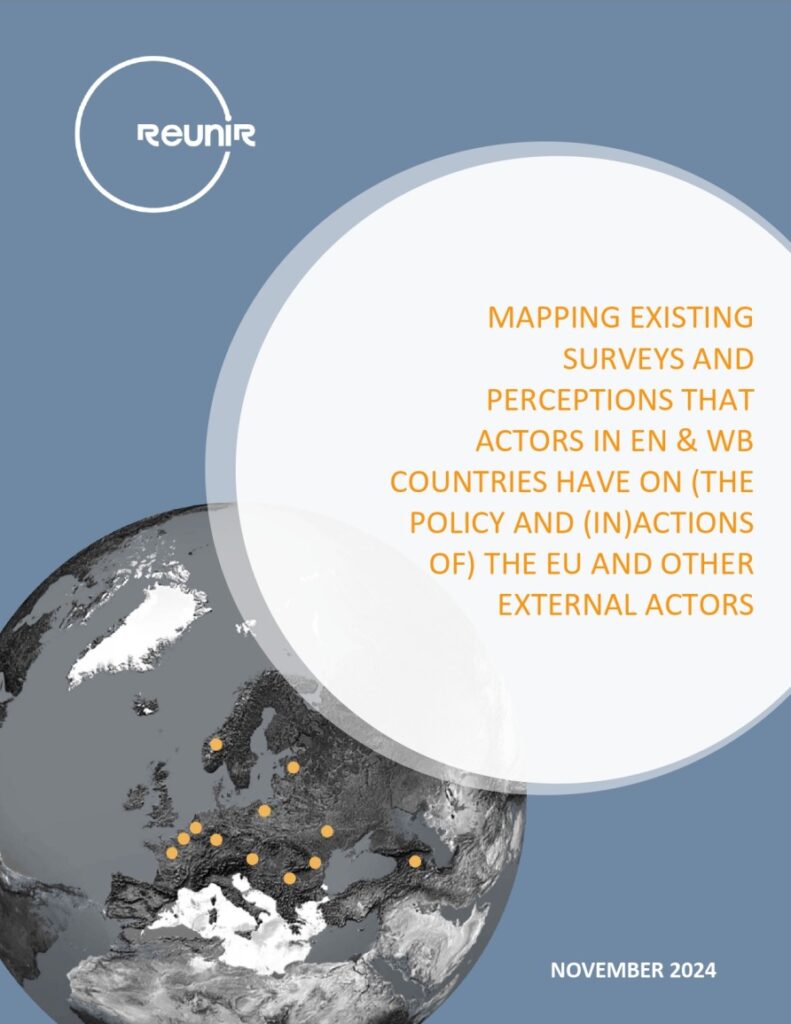Introduction
The mapping analysis presents and compares various data from surveys and polls that have been carried out in the six candidate countries of the Western Balkans (WB6): Albania, Bosnia and Herzegovina, Kosovo, Montenegro, North Macedonia, and Serbia, and the three of the Eastern Neighbourhood (EN3): Georgia, Moldova, and Ukraine, which reflect on the citizens’ perception of external actors in both regions. Considering that the countries of both regions aspire towards membership of the European Union, the EU is a key actor which forms a focus for many surveys and polls. Other key external actors include the US, Russia, Turkey, and China.
In providing information on the perceptions of external actors, our aim is two-fold. Firstly, we want to highlight the main concerns that citizens of the countries of the WB6 and the EN3 have of their own countries and their policies relevant to the relationship with external actors (foreign policy, security, economy, democracy). Secondly, the aim is to see what they think of the various processes and the different external actors which affect these policies. For instance, what is the level of support that citizens have for EU accession? Do citizens think that their country’s foreign policy should be more in support of EU/Western countries or Russia? Is there another actor that they would instead engage with? These questions have been part of numerous polls and surveys in the two regions and form an important pillar of information for decision makers. With this mapping, we integrate the findings of the data already gathered by trusted institutions to set the basis for the following stages of field research.
This research will also serve to complement the other publications and analyses that are part of the REUNIR project and which include threat scans to these regions’ economic, security and democratic development1. This assessment includes expert views on the potential threats facing the two regions, including official strategic documents and an analysis of developments in the countries of the region, including investments and other types of diplomatic engagement. With this mapping analysis the aim is to see the perceptions of citizens to gain a better understanding of how the developments in other research of the REUNIR project are reflected on the ground, as a building block for future research within the project.

